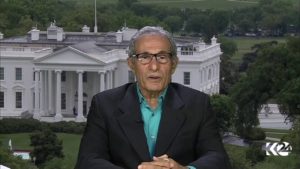WASHINGTON (Agencies)
Stuxnet to have sabotaged nuclear centrifuges
U.S. and Israeli intelligence services collaborated to develop a destructive computer worm to 
sabotage Iran’s efforts to make a nuclear bomb, The New York Times reported Saturday. In its online edition, the Times quoted intelligence and military experts as saying Israel has tested the effectiveness of the Stuxnet computer worm, which apparently shut down a fifth of Iran’s nuclear centrifuges in November and helped delay its ability to make its first nuclear weapons.
The testing took place at the heavily guarded Dimona complex in the Negev desert housing the Middle East’s sole, albeit undeclared nuclear weapons program. Experts and officials told the Times the effort to create Stuxnet was a U.S.-Israeli project with the help, knowingly or not, of Britain and Germany.
The newspaper cited unidentified intelligence and military experts familiar with Dimona who said Israel had spun centrifuges virtually identical to those at Iran’s Natanz facility, where Iranian scientists are struggling to enrich uranium.
“To check out the worm, you have to know the machines,” an American expert on nuclear intelligence told the newspaper. “The reason the worm has been effective is that the Israelis tried it out.”
The Stuxnet worm apparently included two major parts, one intended to make Iran’s nuclear centrifuges spin out of control.
Another secretly recorded normal operations at the nuclear plant, then played those recordings back to the site’s operators so all would appear usual during the sabotage operation, according to the Times.
Stuxnet targets computer control systems made by German industrial giant Siemens and commonly used to manage water supplies, oil rigs, power plants and other critical infrastructure.
Most Stuxnet infections have been discovered in Iran, giving rise to speculation it was intended to sabotage nuclear facilities there.
Speculation about the Israeli role
There has been widespread speculation Israel was behind the Stuxnet worm that has attacked the computers in Iran, and Tehran has blamed the Jewish state and the United States for the killing of two nuclear scientists in November and January.
Iran’s centrifuges have been plagued by breakdowns since a rapid expansion of enrichment in 2007 and 2008, and security experts have speculated its nuclear program may have been targeted in a state-backed attack using Stuxnet.
In November, Iranian President Mahmoud Ahmadinejad said that malicious software had created “problems” in some of Iran’s uranium enrichment centrifuges, although he said the problems had been resolved.
The Times said the worm was the most sophisticated cyber-weapon ever deployed and appeared to have been the biggest factor in setting back Iran’s nuclear march. Its sources said it caused the centrifuges to spin wildly out of control and that a fifth of them had been wiped out.
It added it was not clear the attacks were over and that some experts believed the Stuxnet code contained the seeds for more versions and assaults.
The Times report came as Iran earlier said its controversial uranium enrichment program was progressing “very strongly,” just days ahead of a high-profile meeting between Tehran and six world powers over the Islamic republic’s nuclear program.
Both the United States and Israel have recently announced they believe the program has been set back by several years. U.S. Secretary of State Hillary Clinton pointed to a series of sanctions imposed since June 2009 by the U.N. Security Council and individual countries.
And Moshe Yaalon, Israel’s strategic affairs minister and former military chief, said last month that a series of “technological challenges and difficulties” meant Tehran was still about three years away from being able to build nuclear weapons.
Israel has backed U.S.-led efforts to prevent Iran from developing a nuclear weapons capability through sanctions, but has also refused to rule out military force.
Israel itself is widely believed to have built more than 200 atomic warheads at its Dimona reactor but it maintains an official policy of “ambiguity” over whether it is a nuclear power.











+ There are no comments
Add yours